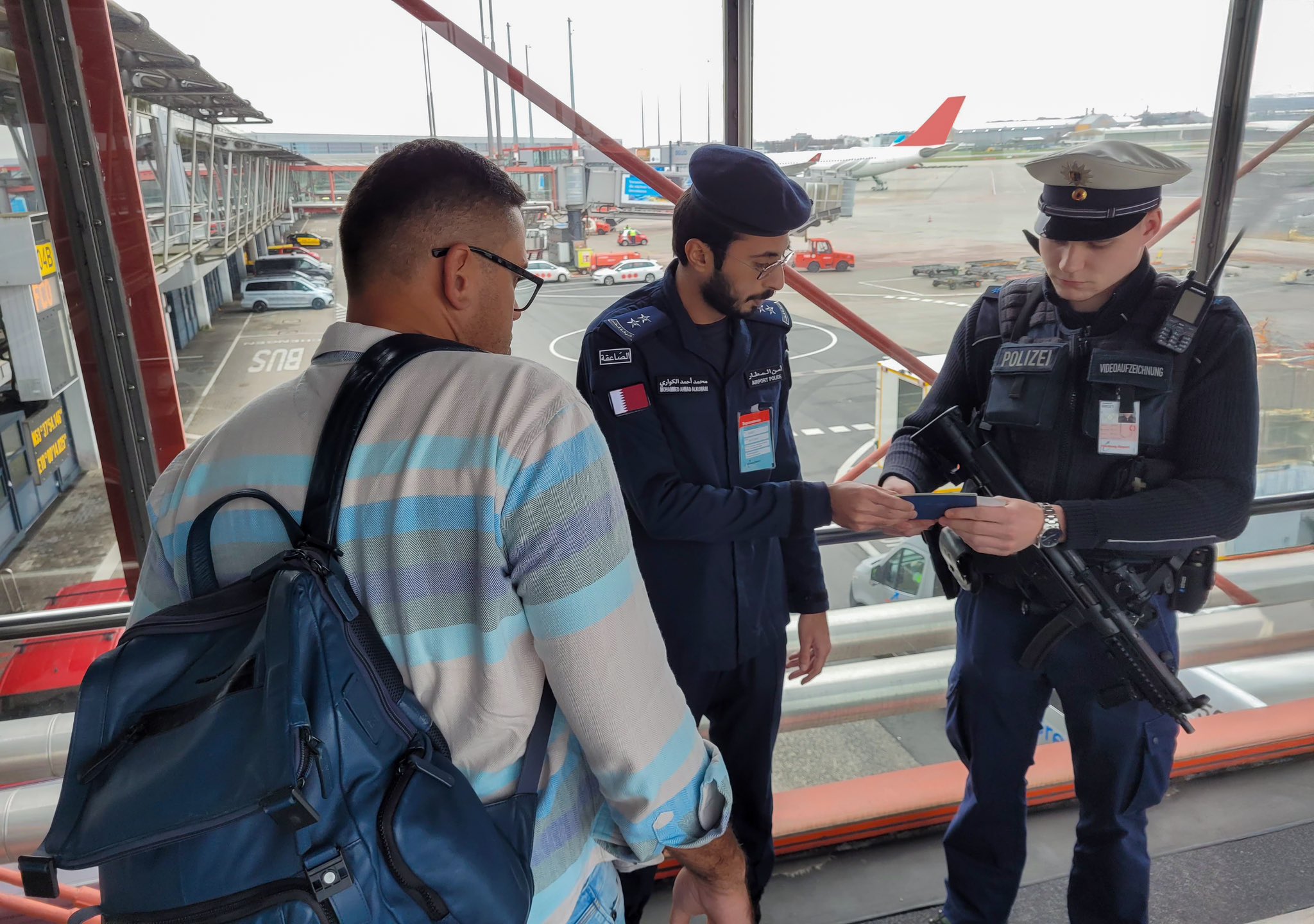Analysts discussed the weaponisation of technology during India’s election process and its affiliations with Israel amid the ongoing war in Gaza
Qatar’s Amir has extended his congratulations in a phone call to India’s Prime Minister Narendra Modi on his third term.
Modi expressed his gratitude for the call, and asserted his commitment to bolster relations to “unprecedented heights”.
The exchange came after Modi’s Bharatiya Janata Party (BJP) were declared as the winners of this year’s general election, despite the party falling short of an outright majority.
After seven rounds, totalling an extensive 44-day voting period from April 19 to June 1, Modi’s BJP secured 240 out of the 543 parliamentary seats.
The BJP also leads the National Democratic Alliance (NDA); a coalition of parties known for right-wing leanings. The NDA has wielded power over India since Modi’s initial win in 2014 – leading to the rise of a Hindu-first agenda in Indian politics – an ideology otherwise known as Hindutva.
Speaking to Doha News, Uday Chandra, Assistant Professor of Government at Georgetown University – Qatar, described Hindutva rhetoric as going far beyond ideology.
“Islamophobia, in many ways, defines Hindutva identity. We might say that it’s all ideological, but I think it goes far beyond regular ideology,” he explained.
For instance, 2019 saw India pass a law allowing “‘persecuted religious minorities”’ in neighbouring countries to seek Indian citizenship. The law, however, categorically excludes Muslim applicants.
In the final hours leading to the announcement of the results, Modi took to his blog to describe his country’s elections as the “biggest festival of democracy“.
Despite his optimism, Doha News has spoken to experts about the obstacles that may have undermined the democratic process – including the spread of disinformation on digital platforms, the rise of Hindutva, and a shift in India’s relationship with Israel amid its brutal onslaught of the Gaza Strip.
Despite the immense voter turnout, these experts caution against India’s descent into rampant bigotry at the hands of Modi’s BJP.
Digital battlegrounds
Meanwhile, the extensive use of online platforms for campaigning by India’s political parties, as well as external cyber disruptions, have sparked concern among observers – especially regarding the misuse of artificial intelligence (AI) tools.
In May, OpenAI published a report discussing its efforts to thwart disruptive external threats to the Indian election. The artificial intelligence tech giant detected that Israel’s STOIC, a political marketing firm in Tel Aviv, had launched an operation targeting the BJP.
Dubbed ‘Zero Zeno’ by OpenAi, STOIC utilised the platform’s technology to generate comments that were posted across an array of social media platforms, such as Telegram, X and Instagram.
Rajeev Chandrasekhar, the union minister at India’s Electronics and Information Technology Ministry, described the incident as a threat to India’s democracy.
However, the cyber threats to the democratic process weren’t just external. BJP officials within government and troll armies weaponised communication technologies to spew hate speech and spread fake news against Muslims online.
In May, an Indian news outlet blew the whistle on a since-deleted video targeting India’s Muslim community that was uploaded to Instagram by the BJP’s Karnataka-state division.
The video said: “If you are a non-Muslim, [the opposition Indian National] Congress will snatch your wealth and distribute it to Muslims. Narendra Modi knows of this evil plan. Only he has the strength to stop it.”
Chandra, whose research interests include postcolonial theory and the state in modern India, told Doha News that when it comes to Hindutva, “it’s about asserting Hindu identity while demonising someone else – and that’s usually done against Muslims”.
He added that amid Modi’s rise to power in 2014, Hindutva rhetoric skyrocketed in popularity by appealing to the educated elite.
“There is an inherent attraction for people with STEM education to seek simple solutions to social and political problems, much like fixing a plumbing leak,” Chandra said. “Modi presents himself as someone who can cut through democratic processes and act like a CEO, which appeals to this demographic.”
BJP and Israel
Upon examining voting behaviour in the diaspora, Chandra highlighted that Indians in the Middle East region typically hail from Muslim or Christian minority groups.
“A lot of Indian Muslims and Christians in the Gulf are influential on and offline in mobilising drives in support of Palestine,” he said.
Since October 7, the United Nations’ humanitarian office’s latest impact report states that Israel’s indiscriminate onslaught has killed at least 37,084 Palestinians in the Gaza Strip. A further 84,494 people have been rendered injured amid the aggressor’s destruction of the enclave’s health sector.
In the wake of the Hamas attacks on October 7, Indian Prime Minister Narendra Modi said via X: “We stand in solidarity with Israel at this difficult hour.”
Three days later, Modi doubled down and said: “People of India stand firmly with Israel in this difficult hour. India strongly and unequivocally condemns terrorism in all its forms and manifestations.”
According to Chandra, this stance is hardly surprising.
“India typically piggybacks on Euro-American discourse of terrorism being associated with one religion,” he said.
“Although Modi does not say this explicitly in his tweet, it’s very much implied that Islam and Muslims are all default guilty by association,” Chandra added.
Despite Modi’s being vocal in calling out “Hamas terrorism,” yet silent on Israeli atrocities against Palestinians, Chandra said India remains focused and has always supported a two-state solution.
India’s longstanding policy towards Palestinian sovereignty dates as far back as 1947, when as part of the United Nations Special Committee on Palestine, India proposed an independent, federal Palestinian state, with Jerusalem as its capital. India also voted against the partition of Palestine.
However, CJ Werleman, a journalist whose writings explore Islamophobia within media spaces and politics, argues that the BJP has capitalised on Israel’s war on Gaza to promote their Hindutva rhetoric.
“A telling example is a tweet from BJP’s official X account after the October 7 attack, likening Israel’s situation to India’s pre-Modi years of dealing with ‘Islamic’ terrorism,” he explained. “This narrative aimed to cast Indian Muslims as a security threat, much like how Hamas is perceived in Israel.”
He added that Hindu nationalists admire Israel as a model ethno-nationalist state. This sentiment was echoed by a May 2023 report by the Middle East Research and Information Project, which described the BJP’s “digital army” as mirroring the tactics of Israel’s Ministry of Strategic Affairs, such as coordinating online assault campaigns targeted at Palestinians.
Beyond the digisphere, Werleman highlighted how this growing alliance translates offline. He explained that both India and Israel’s government co-opt Islamophobia to bolster their national security narratives. Today, India’s purchasing power over Israeli-produced weaponry is estimated to stand at $2.9bn over the past decade.
“These weapons are often used to strengthen India’s military occupation in Kashmir,” he added. He also said that Israeli and Indian human rights abuses against Muslims are largely ignored by Western allies.
Regarding the impact of public perception on India, Werleman dubbed the BJP’s troll army as rendering the country “the number one source of anti-Palestine disinformation”.
This infrastructure not only amplifies pro-Israel narratives in South Asia but also enables the reinforcement of the BJP’s harmful ideological positions, Werleman said.







